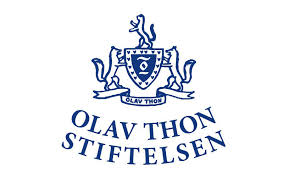Rasmussen Group
The Rasmussen Group explores the interaction between the hallmarks of aging: genomic instability, telomere attrition, epigenetic alterations, loss of proteostasis, deregulated nutrient sensing, mitochondrial dysfunction, cellular senescence, stem cell exhaustion, and altered intercellular communication.

The Rasmussen Group seeks to understand the interconnectedness between the hallmarks of aging and their relative contributions to aging. Our goal is to identify pharmaceutical targets to improve human health during aging.
The correct functioning of these processes is important for avoiding many life-threatening pathologies that can arise because of genetic changes. However, a comprehensive understanding of the scope, dynamics and functions of these complex biological responses is lacking. A particular focus of the group is to elucidate how signaling by unrepaired DNA damage and replication stress promote and regulate mitochondrial function.
“We provide advanced molecular insights into the interplay between cellular pathways that protect against accelerated aging, which is of strong relevance for the design of better treatment strategies for age-related disorders”, says Professor and Group Leader Lene Juel Rasmussen.
The group is excellently positioned to address this challenge due to its expertise in dissection of cellular signaling mechanisms by means of cell biology-, biochemistry- and microscopy-driven approaches. We collaborate with leading experts in human physiology, model organisms and neuroscience, and employ innovative strategies to illuminate the molecular mechanisms promoting healthy aging on both a systems-wide and mechanistic level.
In 2000, our group identified the enzyme exonuclease 1 (EXO1) as a novel component of the human MMR pathway. Our subsequent studies on human EXO1 helped elucidate the molecular mechanism of human MMR and provided insight into the role of MMR defects in human cancer (Liu et al., 2017; Keijzers et al., 2016; Liberti et al., 2011; Knudsen et al., 2007; Nielsen et al., 2004; Jäger et al., 2001; Drost et al., 2013; Thompson et al., 2014; Drost et al., 2018).
Recently, we have shown, for the first time, that replication stress caused by Rev1-deficiency causes mitochondrial dysfunction and this can be reversed by NR supplementation (Fakouri et al., 2017; Martín-Pardillos et al., 2017). A finding that provides valuable insight into mechanisms of human aging and could lead in future to novel therapies for clinically-relevant human diseases.
The hallmarks of aging
Nordea-fonden supports a research program on molecular aging that aims to understand the interconnectedness between the hallmarks of aging and their relative contributions to aging, with the final goal of identifying pharmaceutical targets to improve human health during aging.
Role of mitochondrial dysfunction in Alzheimer's Disease: a search for therapeutic strategies
The Olav Thon Foundation has granted money to research on how to explain why defects in DNA repair, and resulting cellular oxidative stress and mitochondrial dysfunction are primary molecular mechanisms in late onset sporadic Alzheimer’s (AD). The study will improve our understanding of the molecular basis of AD, laying the groundwork for effective treatment and/or prevention of AD.
Harnessing the power of Big Data to address the societal challenge of aging
The Novonordisk Foundation has granted money to support a program that (i) delivers novel methods to make optimal use of the available big data across three foci of research, (ii) performs analyses to enhance our ability to explain and predict trajectories of aging and health, and (iii) trains a cadre of physicians, statisticians and life science researchers in the use of big data in biomedicine. To do so, we integrate the systematic exploration of population data with a comprehensive interrogation of biological samples, complemented by experimental validation of data-driven explanatory models.
- Song J, Li Z, Zhou L, Chen X, Hao K, Sew WQG, Herranz H, Ye Z, Olsen JV, Nygaard M, Christensen K, Li Y, Bohr VA, Tong X, Rasmussen LJ, Dai F§. 2023. Evolutionarily-conserved FOXO-regulated OSER1 extends lifespan and regulates oxidative stress response. Under revision in Nature Comm.
§Co-corresponding author - Guimera AM, Clark P, Wordsworth J, Anugula S, Rasmussen LJ, Shanley DP. 2022. Systems modelling predicts chronic inflammation and genomic instability prevent effective mitochondrial regulation during biological ageing. Exp Gerontol. Jul 7;166:111889. doi: 10.1016/j.exger.2022.111889.
- Desler C, Durhuus JA, Lau-Lindestrand Hansen T, Anugula S, Zelander NT, Bøggild S, Rasmussen LJ. 2022. Partial inhibition of mitochondrial-linked pyrimidine synthesis increases tumorigenic potential and lysosome accumulation. Mitochondrion. Mar 25;64:73-81. doi: 10.1016/j.mito.2022.03.005.
- du Mee DJM, Bak M, Østergaard E, Rasmussen LJ. 2020. Mitochondrial dysfunction induced by variation in the non-coding genome - A proposed workflow to improve diagnostics. Mitochondrion. 53:255-259.
- Aman Y, Frank J, Lautrup SH, Matysek A, Niu Z, Yang G, Shi L, Bergersen LH, Storm-Mathisen J, Rasmussen LJ, Bohr VA, Nilsen H, Fang EF. 2020. The NAD+-mitophagy axis in healthy longevity and in artificial intelligence-based clinical applications. Mech Aging Dev. Dec 5:111194.
- Drost M, Tiersma Y, Thompson BA, Spurdle AB, Frederiksen JH, Keijzers G, Pappas L, Boucher KM, Molenkamp S, Zonneveld JBM, van Asperen CJ, Sijmons RH, Goldgar DE, Rasmussen LJ†, Greenblatt MS†, de Wind N†, Tavtigian SV†. 2019. An Integrated, Functional Assay-Based Procedure to Classify Mismatch Repair Gene Variants in Lynch Syndrome. Genet Med.
†Co-corresponding author - Fakouri NB, Durhuus JA, Regnell CE, Angleys M, Desler C, Hasan- Olive MDM, Martín-Pardillos A, Tsaalbi-Shtylik A, Thomsen K, Lauritzen M, Bohr VA, de Wind N, Bergersen LH, Rasmussen LJ. 2017. Rev1 contributes to proper mitochondrial function via the PARP-NAD+-SIRT1-PGC1α axis. Sci Rep. Oct 2;7(1):12480.
- Martín-Pardillos A, Tsaalbi-Shtylik A, Chen S, Lazare S, van Os RP, Dethmers-Ausema A, Fakouri NB, Bosshard M, Aprigliano R, van Loon B, Salvatori DCF, Hashimoto K, Dingemanse-van der Spek C, Moriya M, Rasmussen LJ, de Haan G, Raaijmakers MHG, de Wind N. 2017. Genomic and functional integrity of the hematopoietic system requires tolerance of oxidative DNA lesions. Blood. Sep 28;130(13):1523-1534.
- Thomsen K, Sherazi N, Yokota T, Hasan-Olive M, Fakouri NB, Desler C, Regnell C, Rasmussen LJ, Dela F, Bergersen LH, Lauritzen M. Initial brain aging: heterogeneity of mitochondrial size is associated with respiratory dysfunction in cortex and hippocampus. 2017. Neurobiol Aging. Aug 12. pii: S0197-4580(17)30259-2.
- Strickertsson J, Desler C, Rasmussen LJ. 2017. Bacterial infection increases risk of carcinogenesis by targeting mitochondria. Semin Cancer Biol. Jul 25. pii: S1044-579X(17)30192-X.
- Liu D, Keijzers G, Rasmussen LJ. 2017. DNA mismatch repair and its many roles in eukaryotic cells. Mutat Res Rev. 773:174-187.
- Liu D, Frederiksen JH, Liberti SE, Lützen A, Keijzers G, Pena-Diaz J, Rasmussen LJ. 2017. Human DNA polymerase delta double-mutant D316A E318A interferes with DNA mismatch repair in vitro. Nucleic Acids Res. Sep 19;45(16):9427-9440.
- Lopez-Contreras AJ, Specks J, Barlow JH, Ambrogio C, Desler C, Vikingsson S, Rodrigo-Perez S, Green H, Rasmussen LJ, Murga M, Nussenzweig A, Fernandez-Capetillo O. Increased Rrm2 gene dosage reduces fragile site breakage and prolongs survival of ATR mutant mice. Genes & Dev. 29: 690-695. 2015.
- Thompson BA, Spurdle AB, Plazzer J-P, et al. Application of a five-tiered scheme for standardized classification of 2,392 unique mismatch repair gene variants lodged on the InSiGHT locus-specific database. Nature Genetics. 46: 107-115. 2014.
- Maynard S, Keijzers G, Gram M, Desler C, Bendix L, Budtz-Jørgensen E, Molbo D, Croteau DL, Osler M, Stevsner T, Rasmussen LJ, Dela F, Avlund K, Bohr VA. Relationships between human vitality and mitochondrial respiratory parameters, reactive oxygen species and dNTP levels in peripheral blood mononuclear cells. Aging. 5: 850-864. 2014.
- Strickertsson JAB, Desler C, Rasmussen LJ. Impact of bacterial infections on aging and cancer: Impairment of DNA repair and mitochondrial function of host cells. Exp Gerontology. 56: 164-174. 2014.
- Machado AM, Desler C, Bøggild S, Strickertsson JA, Hansen LF, Figueiredo C, Seruca R, Rasmussen LJ. Helicobacter pylori infection affects mitochondrial function and DNA repair, thus, mediating genetic instability in gastric cells. Mech. Aging Dev.134: 460-466. 2013.
- Drost M, Lützen A, van Hees S, Ferreira D, Calléja F, Zonneveld JBM, Nielsen FC, Rasmussen LJ, de Wind N. Genetic screens for the identification of pathogenic gene variants in the cancer predisposition Lynch syndrome. Proc. Natl. Acad. Sci. USA. 110: 9403-9408. 2013.
- Andersen SD, Liberti SE, Lützen A, Drost M, Bernstein I, Nilbert M, Dominguez M, Nyström M, Hansen TVO, Christoffersen JW, Jäger AC, de Wind N, Nielsen FC, Tørring PM, Rasmussen LJ. Functional characterization of MLH1 missense variants identified in Lynch Syndrome patients. Human Mutat. 33: 1647-1655. 2012.
- Rasmussen LJ, Heinen CD, Royer-Pokora B, Drost M, Tavtigian S, Hofstra RMW, de Wind N. Pathological assessment of mismatch repair gene variants in Lynch syndrome: past, present and future. Human Mutat. 33: 1617-1625. 2012.
- Machado AMD, Figueiredo C, Touati E, Máximo V, Sousa S, Michel V, Carneiro F, Nielsen FC, Seruca R, Rasmussen LJ. Helicobacter pylori infection induces genetic instability of nuclear and mitochondrial DNA in gastric cells. Clin. Cancer Res. 15: 2995-3002. 2009.
- Desler C, Petersen BM, Stevnsner T, Matsui S-I, Kulawiec M, Singh KK, Rasmussen LJ. Mitochondria as determinant of nucleotide metabolism and chromosomal stability. Mutat. Res. 625:112-124. 2007.
 Group Leader
Group Leader
Lene Juel Rasmussen
Professor
lenera@sund.ku.dk
(+45) 29 17 65 32
CV, Publications, etc.





